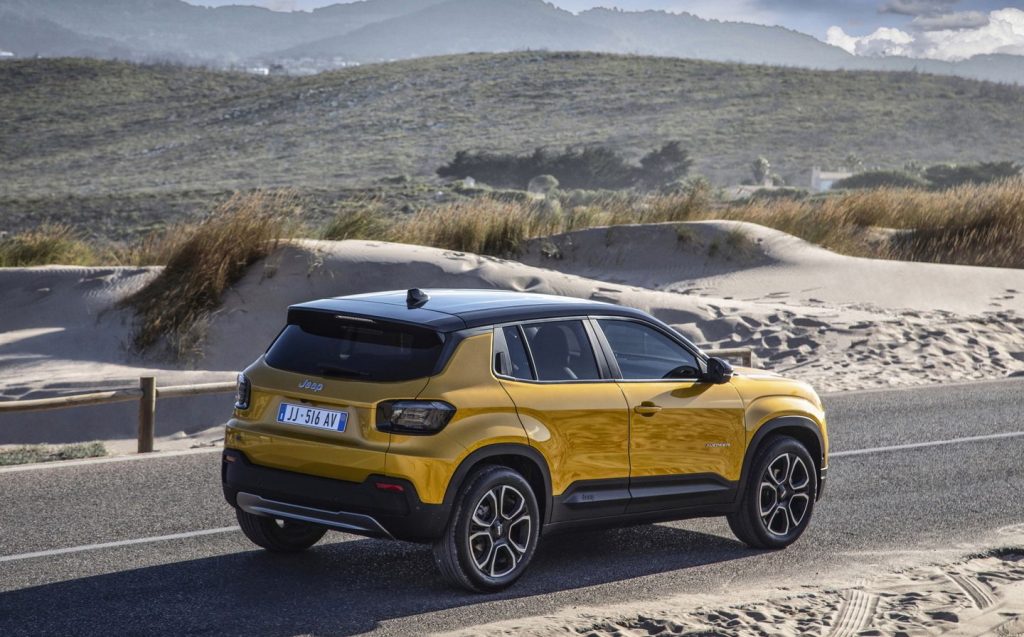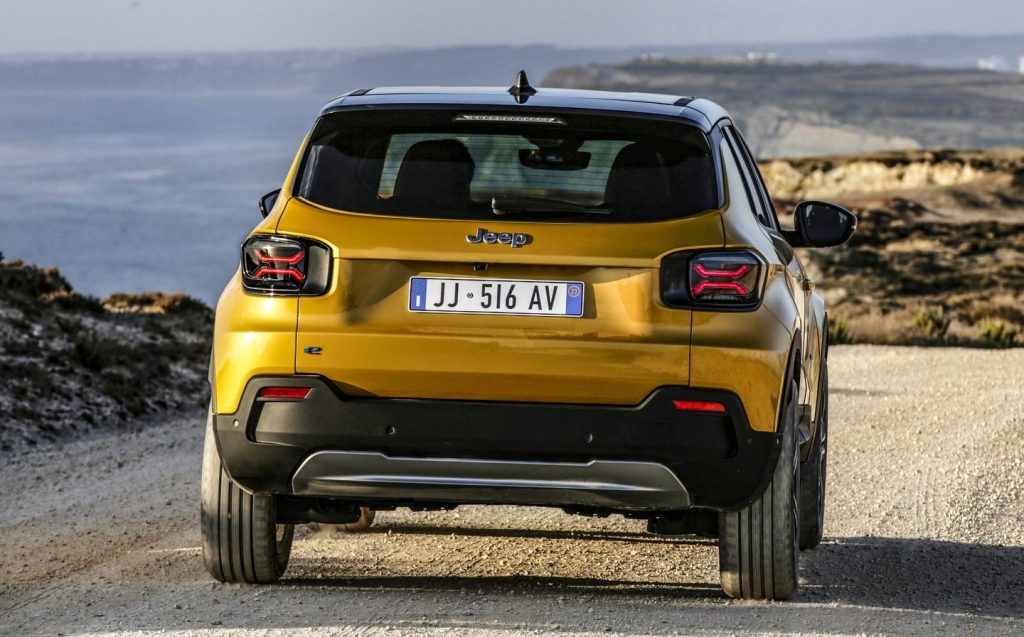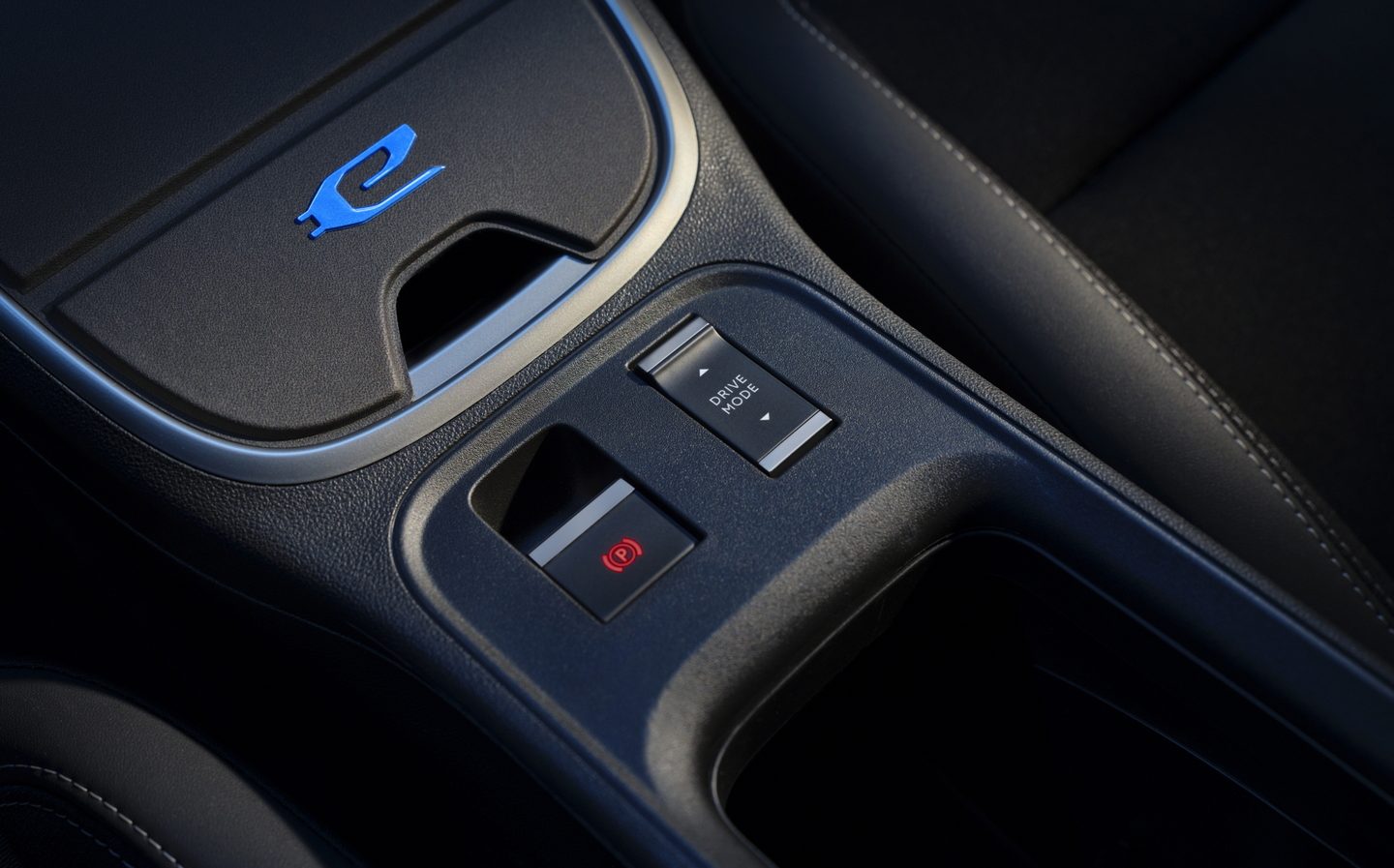Jeep Avenger 2023 review: Rugged design and adequate electric performance for the firm’s first-ever electric car
Honey, I shrunk the Jeep
Jeep, as with every major car maker right now, is on the road to electrification. Its first all-electric offering is the Avenger, which is also the smallest model from the American adventure brand since the original wartime Willys MB. In the intervening years the company has maintained its utilitarian reputation while selling vehicles predominantly used on the road. In fact, calling this new Avenger a Jeep at all is something of an exercise in badge engineering. It uses the same electric underpinnings as the Peugeot e-2008 and even the humble Vauxhall Corsa. Can such a setup truly form the basis for a real Jeep?
Exterior design and rivals

Whatever you think the answer to that question is, there’s little debate about how good-looking the Avenger is. This is really quite an arrestingly compact car when you see it in person, barely any longer than a Ford Fiesta, and not a lot taller in all honesty. It’s very square of stance, too. The extended wheelarches with their grey plastic protection panels, and that broad, shallow grille makes the Avenger appear almost as wide as it is long. It’s not of course, but the squat design can trick you into thinking that it might be.
The slim LED headlights are sunk deep into recesses either side of the grille, which isn’t a grille at all, but simply some decoration on the front end to give the Avenger Jeep’s corporate face. That ‘grille’ can be upgraded with patterns and decals. The headlights aren’t merely sunk for style; as with the fog lights, they’re counter-sunk into the bodywork so that an errant branch or rock (or, more likely, a runaway supermarket trolley) won’t smash the lens.

The biggest available wheels are 18-inch items, and those fill the square-sided arches nicely, even accounting for the Avenger’s jacked-up ride height. The Avenger has 200mm of ground clearance, which is quite respectable for a compact crossover such as this.
Around the back, the Avenger’s hatchback DNA is a little more obvious. Jeep has tried to ruggedise things with a forward-leaning C-pillar and chunky brake lights, but even with the contrast colour roof you can tell that this is quite a small car, certainly by the standards of the brand.
The Avenger will be vying for buyers’ attention in quite a busy sector where a wide variety of shapes and sizes of cars are priced similarly. The obvious alternatives come from within the Stellantis group in the shapes of the Vauxhall Mokka Electric, the forthcoming Fiat 600e and Peugeot’s established e-2008, all sharing their mechanicals with the Jeep. But buyers are just as likely to be considering electric hatchbacks such as the Cupra Born and Volkswagen ID.3, too.
Interior and practicality

The big, body-colour panel that runs across the full width of the Avenger’s dashboard really livens up the interior, which is just as well as there are some suspect plastics in there. The door panels in particular look pretty cheap, but the main surfaces on the dashboard are better. This being an electric car, it can do without a gear selector (the Avenger uses push-button drive selection) which opens up a large storage area in the centre console. This comes with a magnetised flip-top lid so that you can selectively open it in sections, rather like the cover for an iPad. It’s a useful space as it’s big enough to swallow a handbag or a small backpack, and certainly big enough to throw wallets, phones and so on inside.
The door bins are fairly small, but at least there are usefully-sized cupholders and some more storage under the front seat armrest.

The news in the back is much less good. The boot, at 341 litres, is on the small side by crossover standards, while in the rear seats legroom is quite restricted – and headroom isn’t much better. In spite of being entirely electric, the Avenger has a transmission hump, left over from petrol and hybrid powered models built on the same underpinnings, so adults won’t want to squeeze into the middle seat. Worse still for those that do sit in the back is the fact that the low roof and chunky C-pillar make the rear feel too enclosed.
Technology and safety
Atop the big, coloured panel in the centre of the dash is a large 10.25-inch touchscreen infotainment system using the latest software from Stellantis which means that while it’s not the simplest nor easiest setup to use, it is at least tolerable. What makes it more so is that Jeep has sensibly kept physical switchgear for the air conditioning and ventilation. This are so much easier to use than on-screen buttons, though there’s no dual-zone climate control option. At least the air conditioning and heating are powered by a heat-pump system, which reduces the strain on the battery on particularly hot or cold days.

Behind the steering wheel, there’s a digital instrument panel which has pleasantly jazzy graphics, but which can’t quite be configured as much as you might expect. It also doesn’t look quite as good as the screen you get in a Ford Puma (and there’ll be an electric version of the Puma soon to compete with the Avenger). Up front, there are two USB sockets, but those in the back get short-changed as there is just the one socket for passengers to fight over.
The Avenger hasn’t yet been tested by Euro NCAP, but its close stablemate, the Vauxhall Mokka, has and it scored a four-star rating, out of five, with marks deducted for a lack of some side and centre airbags. As standard, the Avenger comes with autonomous emergency braking, which recognises pedestrians and cyclists, but you’ll need to upgrade to the more expensive Altitude model to get radar-guided cruise control.
Performance, battery range and charging speeds

The Avenger is launched with the latest-generation electric system from Stellantis featuring a lithium-ion battery of 51kWh usable energy capacity. That’s an improvement over the old battery as used in previous electric Peugeot, Citroen and Vauxhall models which allowed a range of just over 200 miles, translating to a much less useful 150-180 miles in real-world conditions. The Avenger should do a lot better, not just because of the bigger battery, but also because of a new electric motor which improves from the previous 134bhp on offer to a more robust 153bhp. Indeed, the Avenger’s official range is 250 miles.
After a solid day of driving up hill and down dale, we were left with an 80 per cent battery charge, showing 186 miles of range left. That’s about what the older 50kWh battery would have offered with a full charge, so that seems like a decent return, although that comes with the caveat that we didn’t spend a lot of time on the motorway, which is where EVs tend to be quite inefficient.
Despite the headline 153bhp figure, the Avenger’s performance feels quite sedate at first. The power output of the electric motor is actually reduced to 80bhp in the Eco driving mode and 110bhp in Normal so as to help save battery charge. It only opens up the full 153bhp when you select Sport, so remember to do that before trying to overtake anything. The top speed is limited to 93mph, but that’s fairly academic in a UK sense.

The Avenger doesn’t leap off the line, but instead accelerates with a sort of gentle briskness. A nine-second 0-62mph time is fairly relaxed, and that’s how the Avenger feels, although it does have the usual electric car ability to react quickly to accelerator presses at low speed.
The battery recharges at 100kW from a fast DC charger, which doesn’t sound like much when some rivals come with 150kW charging or even higher, but it probably more accurately reflects the sort of chargers you’ll actually find when you’re out and about. That means a 20-80 per cent charge in 32 minutes. At home on a 7kW wallbox, a full charge from zero would take seven hours and eighteen minutes. The Avenger can use 11kW AC charging if available, too.
Ride and handling
The Avenger’s steering is a little sharper and on-point than you might expect. It’s no Lotus in terms of feel nor feedback, but it does turn that squared-off nose in with some enthusiasm. There are no adaptive dampers, so you’re stuck with the one suspension setting, but it seems reasonably well judged.
Around town, the Avenger’s tiny dimensions and good forward visibility make it easy to place and park, but rear visibility is poor. At least the ride quality is good, proving to be smooth on main roads and only firming up a little at lower speeds.

And this Avenger can supposedly go off-road. The selectable driving modes include Sand, Mud and Snow settings. These alter the traction control and, even though the Avenger is front-wheel drive only for now (an all-wheel-drive model is in the works) it seems to be able to tackle at least a little mild off-roading. Certainly, a bumpy gravel track or damp grass car park won’t present it with any difficulty. Then again, you could say the same thing about a basic Ford Focus.
Pricing and on-sale date
The Jeep Avenger is on sale right now, with prices starting from £35,700 for the basic Longitude model, rising to £37,400 for the Altitude, and up to £39,600 for the top-spec Summit. All come with the same 153bhp electric motor and 51kWh battery. Basic equipment for the Longitude includes the 10.25-inch infotainment screen, a six-speaker stereo, automatic air conditioning, cruise control, heated and powered door mirrors, rear parking sensors, hill descent control, and keyless entry and ignition.
Verdict: Jeep Avenger review

Jeep’s Avenger is a solid first all-electric effort. It won’t top any list of long-range EVs, but it has adequate range for the target market. Likewise, while the cabin looks enticing, it is the least practical of all Jeep models for family use. Style-wise, it’s definitely a winner, and that should be enough to provoke a small whiff of envy in those who’ve gone for a less-rugged-looking crossover. Jeep has much more interesting — and much longer-ranged — EVs on the way soon, but as a first effort, this feels good enough.
Related articles
- If you enjoyed reading our review of the Jeep Avenger EV, you might be interested in Jeep testing self-driving off-road technology
- You may also want to read our review of the Jeep Grand Cherokee 4xe
- Or read why Jeremy Clarkson reckoned that the Jeep Renegade 4xe was “hopeless”
Latest articles
- Porsche 911 Carrera S 2025 review: Harder, better and faster – but is it the best 911?
- F1 2025 calendar and race reports: The new Formula One season as it happens
- Seven great automotive events to visit this summer, from F1 to art and champagne
- Watch new Porsche 911 GT3 smash Nürburgring record for manual cars
- Skoda Elroq 2025 review: Czech carmaker can’t seem to miss with its electric family cars
- Five best electric cars to buy in 2025
- Should I buy a diesel car in 2025?
- Zeekr 7X AWD 2025 review: A fast, spacious and high tech premium SUV — but someone call the chassis chief
- Denza Z9GT 2025 review: Flawed but sleek 1,062bhp shooting brake from BYD’s luxury arm

































